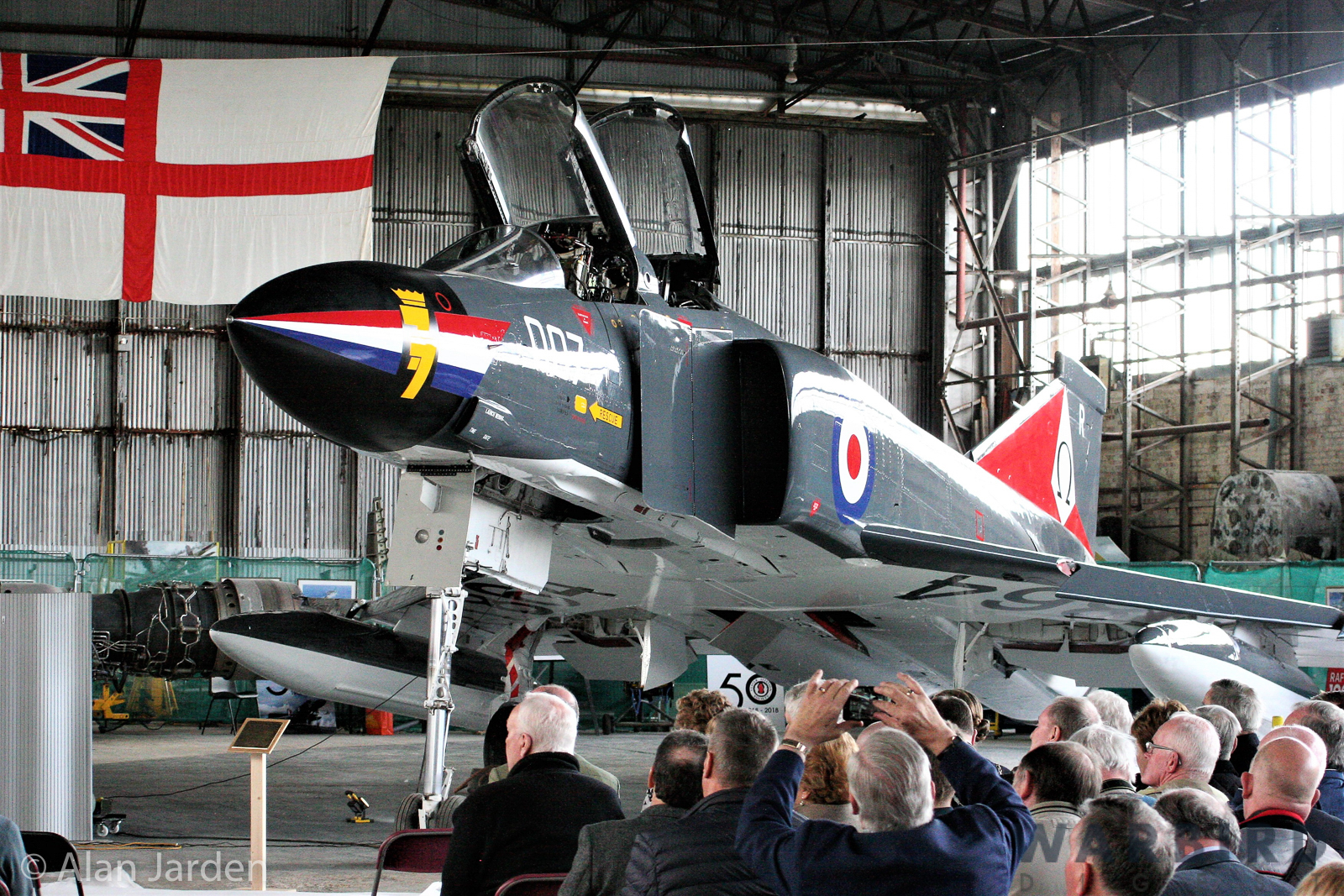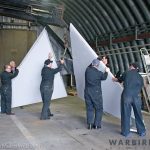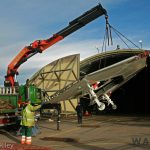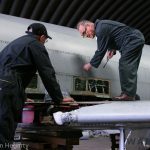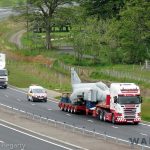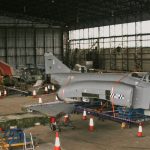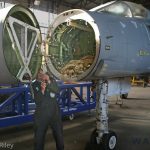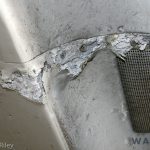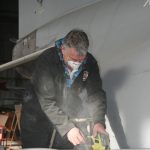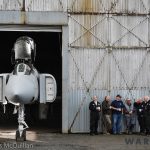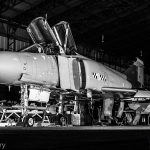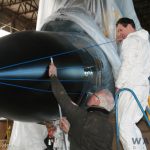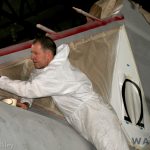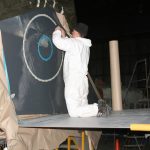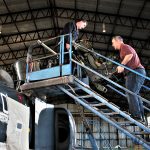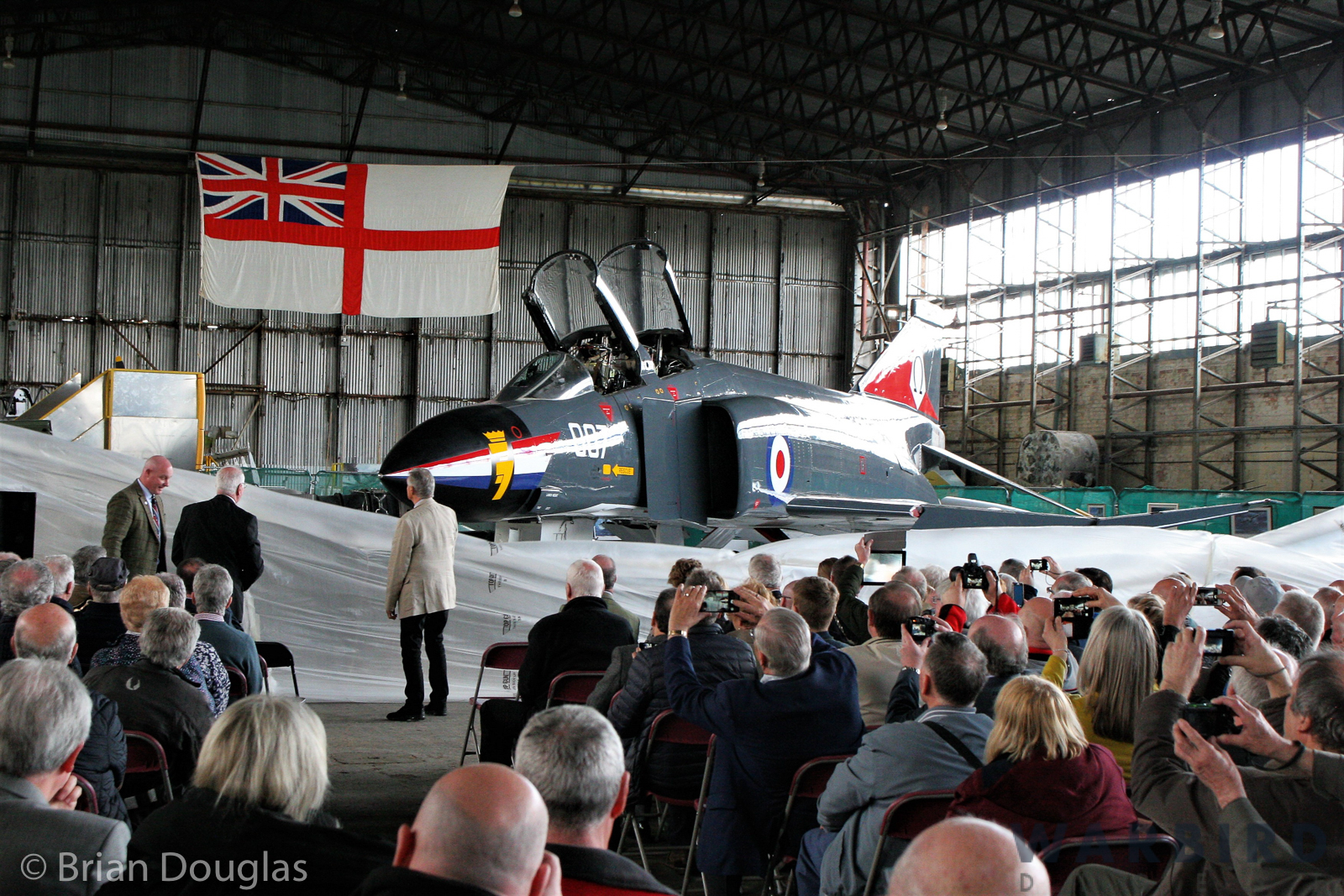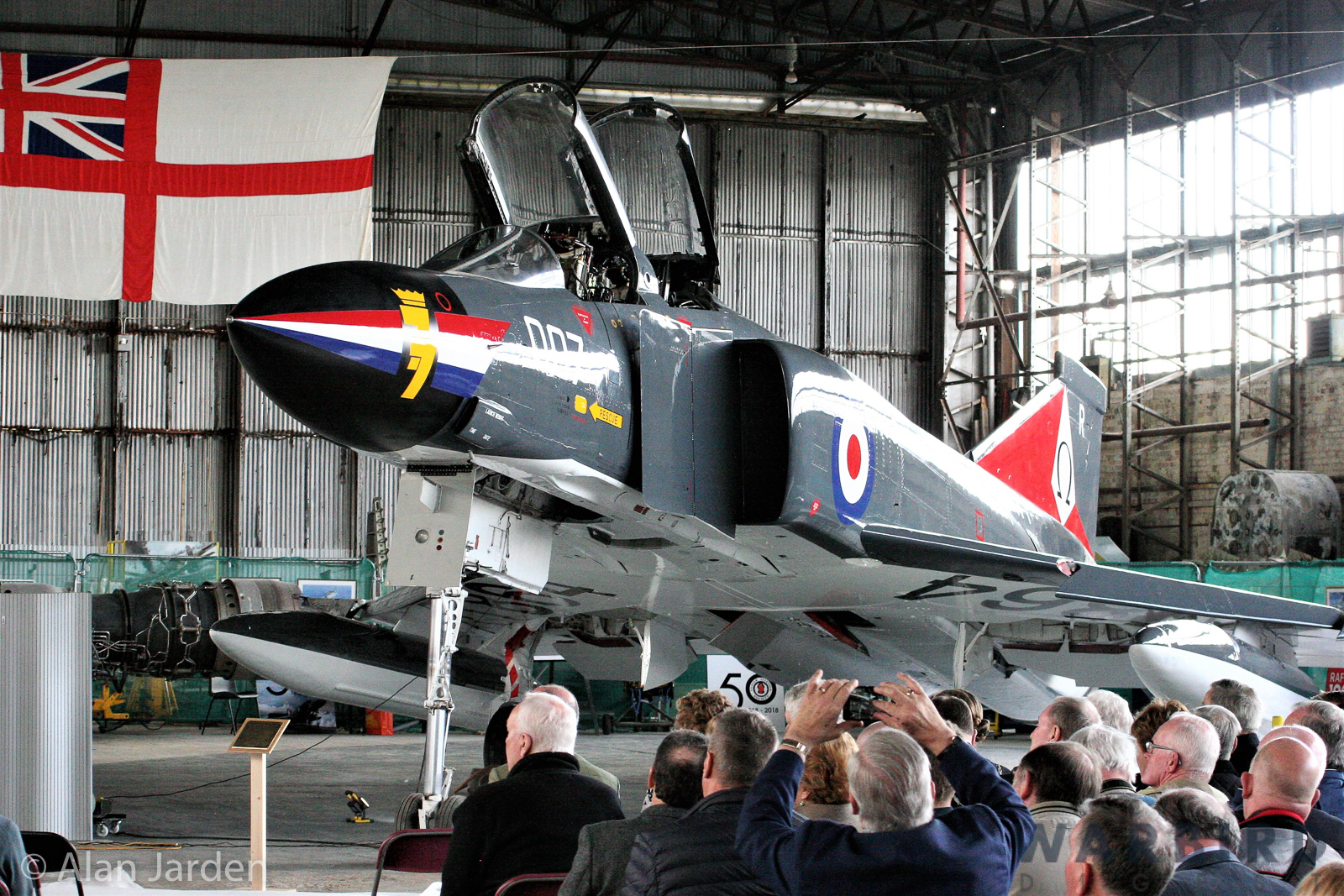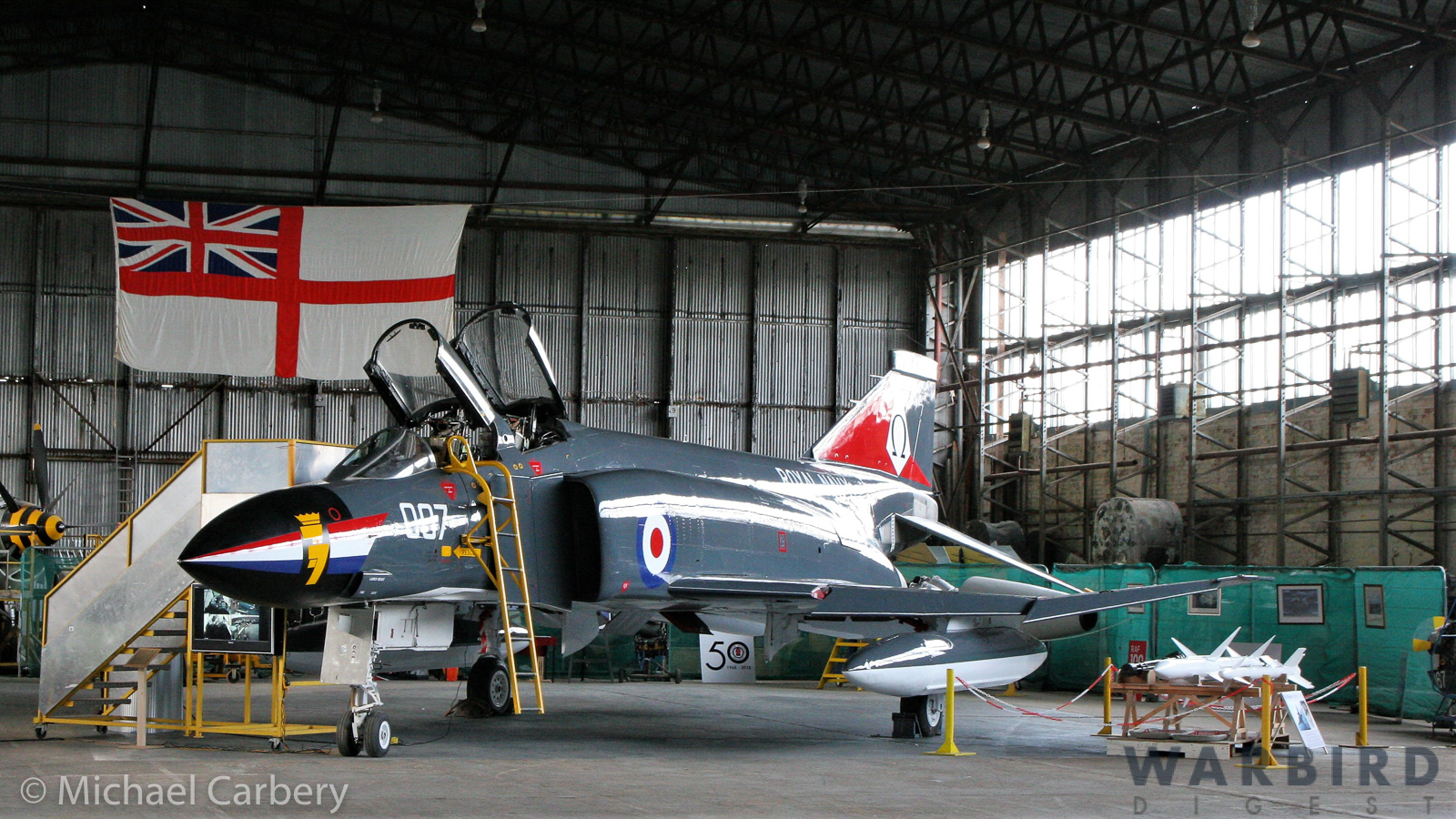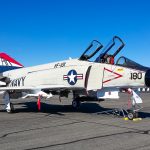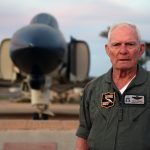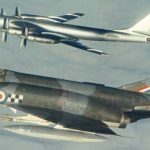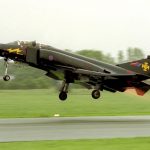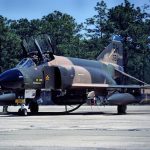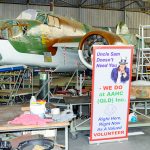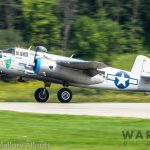The McDonnell-Douglas Phantom II has a long and proud heritage in air arms around the world. While her role in Britain’s Royal Air Force is well known, perhaps less so is that a small number of the type also served in the Royal Navy as the Phantom FG.1 aboard the carrier HMS Ark Royal. When the Royal Navy retired ‘The Ark’ in 1978, the last of the service’s fleet carriers, all of the remaining Royal Navy Phantom IIs were transferred to the RAF. Only five former Royal Navy Phantoms now remain, and one of these is FG.1 XT864, which has undergone a radical transformation over the last five years. The dedicated and highly skilled volunteers at the Ulster Aviation Society in Lisburn, Northern Ireland, have restored the Phantom from a dowdy, weatherbeaten shell into a glorious example of the breed, resplendent in her original Royal Navy uniform. Ian Hendry, a former RAF painter and finisher, was the museum volunteer primarily responsible for applying her new livery, and kindly agreed to write about the experience for Warbird Digest News. We hope you enjoy his efforts as much as we did!
Phantom Phantastic! – A Royal Navy Phantom II is Reborn
by Ian Hendry
It wasn’t going to be a simple job, or a quick one, to make the newly-arrived Phantom look beautiful again. But painter Ian Hendry had a strong example to follow; his colleagues at the Ulster Aviation Society had worked long and hard from 2015 to 2018 to dismantle the big fighter, haul her from Scotland to Northern Ireland and re-assemble her in the group’s No.2 hangar. If they could rebuild her, he could repaint her. Once completed, she would be a proud addition to the Society’s collection of 30 vintage aircraft. He would see to that.
Phantom FG.1 XT864 joined the Royal Navy in 1968, serving with all three Fleet Air Arm squadrons to operate the FG.1, 700(P), 767 and 892 (the only operation unit). With the retirement of HMS Ark Royal in 1978, XT864 was transferred to the RAF. She initially went into storage at RAF St.Athan, before transfer to RAF 111 Squadron. In December, 1988, not long before ‘Treble One’ was to replace their Phantoms with the Tornado F.3, XT864 received damage from a fuel bowser which struck her tail, effectively damaging her beyond repair, and ending the aircraft’s flying days. She was patched up cosmetically, and then placed on display as a gate guard at RAF Leuchars in Scotland, the first of the RAF’s fleet to do so. She spent the next 25 years on the gate at Leuchars, but when that RAF station closed in 2013, it didn’t look good for ‘864. Thankfully, the UAS stepped in and brought the Phantom home to Northern Ireland, where so many examples had received work…
Here is a brief selection of images showing the disassembly of XT864, her transport to and then arrival at the UAS facility in Lisburn, Northern Ireland…
* * *
The mission set out by hangar boss Ray Burrows was clear: A rebuilt Phantom in her new livery, ready for unveiling by May, 2018. She would be the key restoration exhibit to mark the Society’s 50th year as well as the 50th year since XT864’s arrival in the U.K., and the 100th anniversary of the RAF—a lot to celebrate. But meanwhile, much work to be done.
The wing section of the Phantom is one piece; the central wing box, a massive chunk of precise engineering, holds it all together. The restoration team repaired corrosion, and sanded where necessary. Then came the anti-corrosion treatment, primer and sealing, because once re-joined with the fuselage, the wing box couldn’t be accessed. The safety briefing, then months of work would follow. First came the mating of fuselage with wing section, then undercarriage legs joining the wheels, more checking for corrosion, fitting of panels, tail section secured, outer wings attached, more checks, plus other bits and pieces, and all of it rubbed down and ready. What a team! And what a joy to see XT864 standing there, maybe outshone only by the grins from volunteers and visitors.
So now it was down to the finishing prep. It started in March, 2017. It had already been decided XT864 would wear the same livery she wore while serving with 892 Squadron aboard HMS Ark Royal back in 1977. The special port-side nose emblem would be a tribute to the Silver Jubilee – the 25th anniversary of the Queen’s coronation which took place that year.
To make the deadline on time, I went into the hangar on Saturdays and Sundays. The first stages were de-greasing the nose and forward fuselage, stabilator and outer wings. By the summer, it was primer time. Two coats did the job. Careful research of manuals, photos and tech drawings indicated exactly what was needed for the finish. Again, two coats, Extra Dark Sea Grey Gloss on top and sides, Gloss White undersurfaces. On to the tail fin: marking out the distinctive flash and omega symbols, standing back, re-measuring repeatedly. A scratch of the head, then masking. Finally, the spraying of paint, Gloss White and Red. Masking removed and time to stand back again—this time to modestly admire! Smiles all ‘round. Now I could see real progress. It was the same procedure, basically, section by section of the aircraft, weekend by weekend through the autumn and winter.
I contacted Pistol Peter MacKean at the Tangmere Military Aviation Museum for advice as well as the printing and supplying of the vinyl graphics—a labour taking him many hours, often working into the night. His efforts were well appreciated. I applied roundels, serial numbers, squadron i.d. numbers and Fleet Air Arm markings—‘Royal Navy’ on the port side and ‘Fly Navy’ on the starboard, just as XT864 wore back in ’77. Then came the safety and maintenance markings, plus the large underwing serials before installing the newly-painted outboard fuel tanks. Vinyl graphics were applied and used as stencils for the spray painting of the markings.
By spring of this year, all but the tiniest of markings were ready. With the big unveiling ceremony approaching, this was a relief. I’d had visions of me working through the night before, just to get the job done in time. We’d already stopped posting pictures on Facebook, so as to keep XT864’s finished appearance a surprise at the event itself. Meanwhile, to hide the big beauty from the public, Mal Deeley and I came up with a scheme to suspend huge sheets of thin, light masking film from a long cord attached overhead to both sides of the hangar.
Over 500 guests, dignitaries and UAS members attended the début event on April 28th, 2018. Special guests were about 45 retired members of RAF 23 Maintenance Unit (23MU), based near Belfast, who had maintained and upgraded more than 100 British Phantoms—XT864 among them–between 1969 and 1979.
The band was in place and ready, speeches said, fingers crossed and the holding cord was cut. For a moment, nothing seemed to happen. But the music reached a crescendo and down came the drape to disclose XT864 in all her finery. Cheers and applause roared through the hangar, as a few misty eyes gazed in awe. It was a moment of amazement.
So 70 litres of paint later, Ray Burrows had an aircraft painted in Royal Navy colours—but with a little personal twist from myself: the roundels on the wings’ upper surfaces were painted to RAF detail. Whoops? Well I am an ex-RAF painter and finisher, after all! Even now, though, the job continues, with some minor fitting and painting to be done, e.g. with the missiles.
If you are over our way in Northern Ireland, please come down and visit us at the Ulster Aviation Society. Our aircraft are housed in two Second World War hangars at Maze/Long Kesh Development site, at the west edge of Lisburn. Meanwhile, drop into our website for a look at our Phantom’s restoration and unveiling videos. The website is www.ulsteraviationsociety.org. We’re also on Facebook.
–Ian Hendry, Ulster Aviation Society 30 July, 2018
Warbird Digest News wishes to thank Ian Hendry for taking the time to prepare this article for us, and to gather some marvelous images to support the piece. We wish to offer a hearty congratulations to all at the Ulster Aviation Society for their efforts to preserve history. The museum is also coming close to finishing the restoration of an extraordinarily rare, and very original former Royal Navy Grumman Wildcat Mk.V JV482 (FM-1 Bu.15633). We look forwards to hearing more about this restoration in the future. Anyone wishing to help the Ulster Aviation Society with their important efforts should click the following link HERE.







